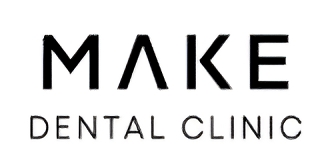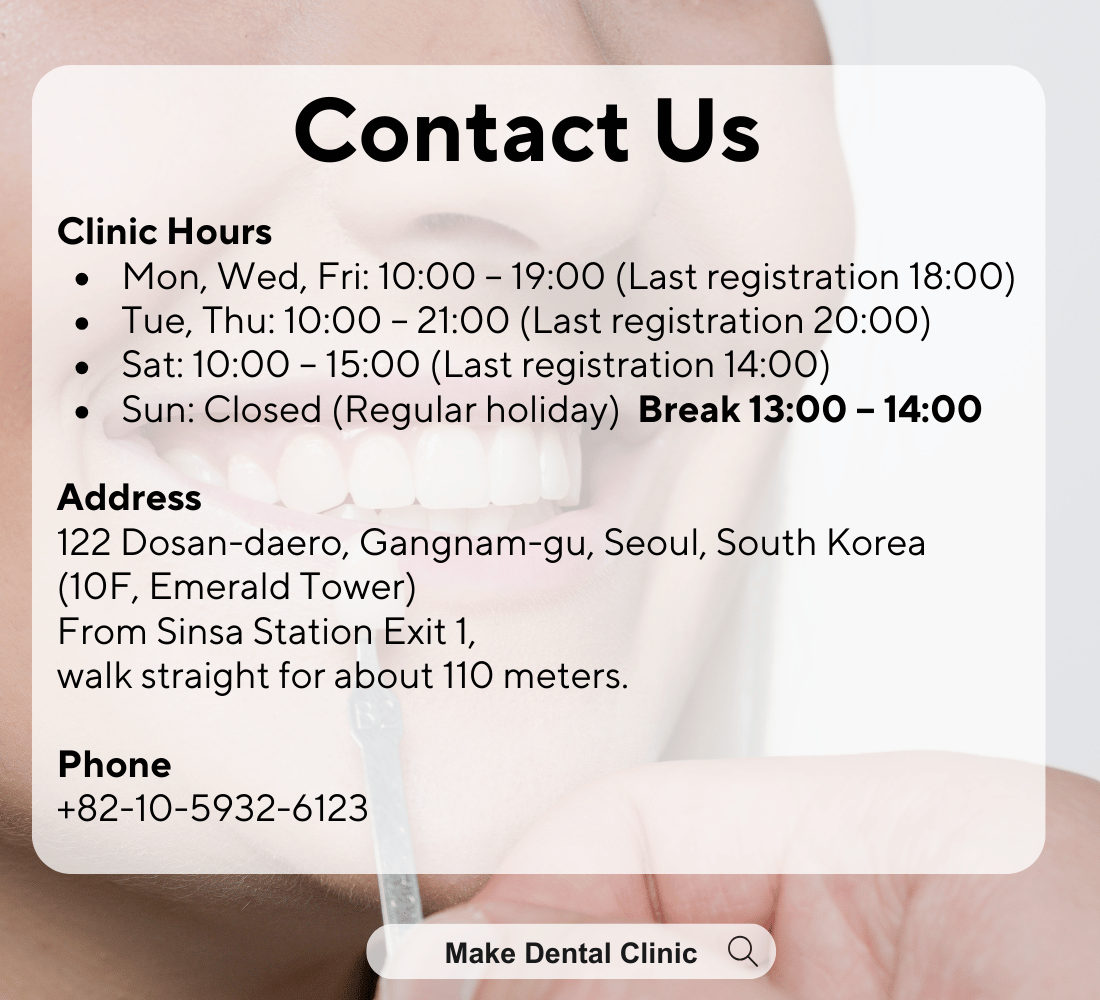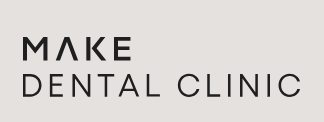Cosmetic Dentistry Veneers in Seoul, Korea
Make Dental Clinic
Natural, Long-Lasting Smile Upgrades (Seoul & Nationwide)
Why Choose Korea for Veneers
- Aesthetic expertise: High case volumes and modern ceramic systems for lifelike translucency.
- Digital planning: Intraoral scanning, photo analysis, and mock-ups for predictable results.
- Conservative care: Minimal-prep and non-prep options when clinically appropriate.
- Traveler friendly: Efficient visit plans for international patients; English-friendly clinics in Seoul.
Veneer Types (Which One Fits Your Goals?)
- Porcelain / Ceramic Veneers
- Best for color stability, durability, and natural light reflection
- Ideal for comprehensive smile makeovers (typical longevity 10–15+ years)
- Laminate (Ultra-Thin) Veneers
- Porcelain “laminates” with less enamel reduction; face-driven design prevents bulkiness
- Composite Veneers (Bonding)
- Budget-friendlier, often same-day; repairable chairside (expect periodic polishing)
What Veneers Can Fix
- Deep discoloration unresponsive to whitening
- Chips, worn edges, small gaps, uneven length/shape
- Mild crowding/asymmetry in the smile zone
- Smile arc and proportion refinements
Minimal-Prep vs Traditional
- Minimal-Prep / Non-Prep: Enamel-preserving reshaping (or none) for subtle–moderate changes
- Traditional Prep: Slightly more reduction when masking severe discoloration or major shape changes
Step-By-Step: Typical Veneer Journey
- Consultation & Digital Scan – Photos, bite analysis, and discussion of goals (shade, length, shape).
- Smile Design & Mock-Up – Preview edge lengths/contours; refine together before committing.
- Conservative Preparation – Only where needed for fit, strength, and natural contours.
- Temporaries (Porcelain Cases) – Test drive speech, bite, and aesthetics.
- Final Bonding – Adhesive protocols under isolation for strong, seamless margins.
- Follow-Up & Maintenance – Bite check, polish, and a home-care plan (nightguard if grinding).
Timeline & Visit Planning
- Composite-focused cases: often same day
- Porcelain/laminate: usually 2–3 visits over 1–3 weeks
- Aligner-first plans: several months, then finishing with veneers/bonding
Pricing & What Affects Cost
- Material (composite vs. ceramic), number of teeth (often 6–10 for smile lines), case complexity
- Lab workflow (in-house CAD/CAM vs artisan lab), mock-ups/temporaries, and extras (whitening, gum contouring)
- Ask what’s included: consult, scans, temporaries, adjustments, nightguard, warranty
Care & Longevity Tips
- Soft brush + low-abrasive toothpaste; daily floss/water flosser
- Avoid biting hard objects (ice, nutshells); don’t use teeth as tools
- Nightguard if you clench/grind
- Professional cleanings every 6 months; annual veneer check
FAQs
Do Veneers Damage Teeth?
When properly planned, veneers are conservative. Minimal-prep or non-prep techniques preserve enamel whenever possible.
Will My Veneers Look “Too White”?
Shade and translucency are matched to your complexion, lip line, and eye whites. The goal is bright and believable.
How Many Teeth Do I Need?
Depends on smile width and goals—commonly 6, 8, or 10 upper teeth; some add lower veneers for symmetry.
Can I Whiten After Veneers?
Whitening does not change porcelain/composite. We whiten first, then match veneer shade to your new baseline.
Are Same-Day Veneers Available?
Yes, for select
composite cases and limited corrections. Larger makeovers often use
lab-made porcelain (2–3 visits).


